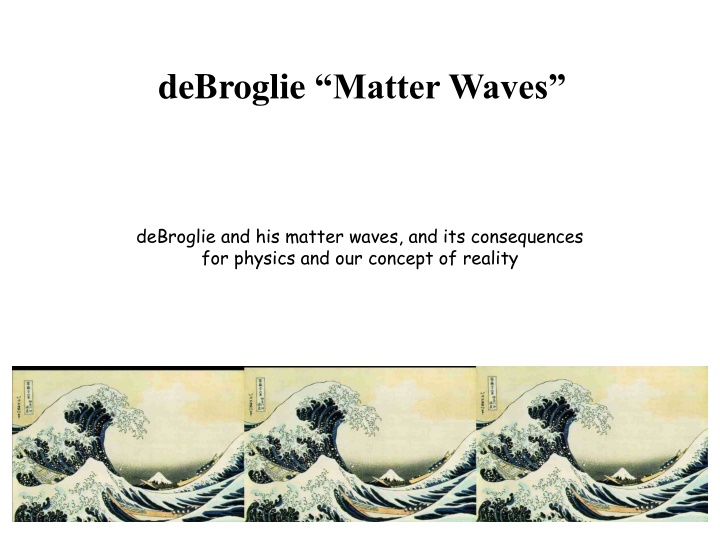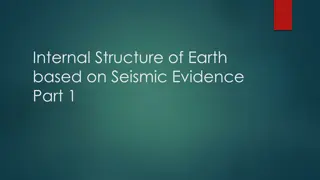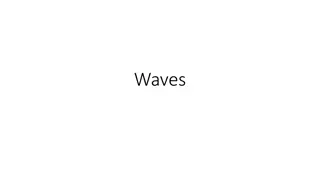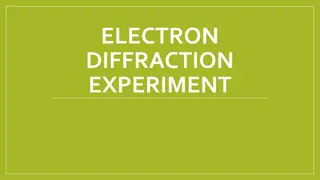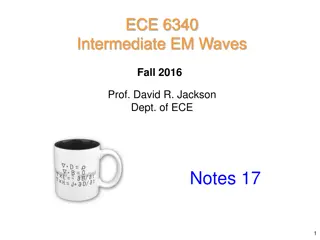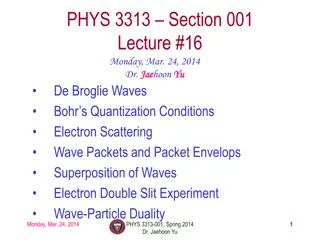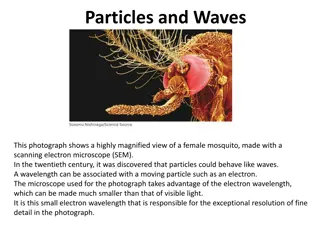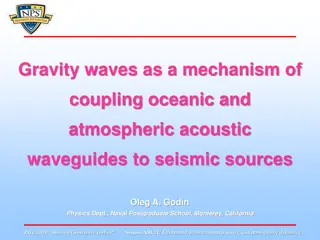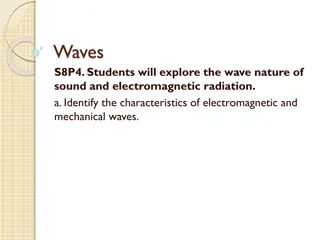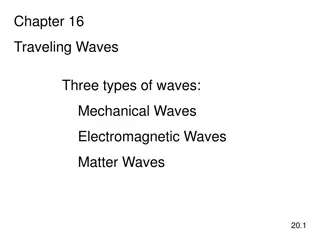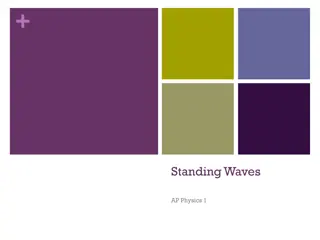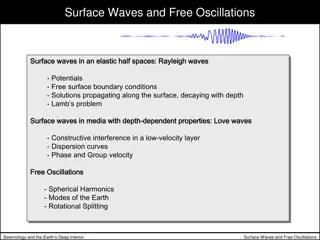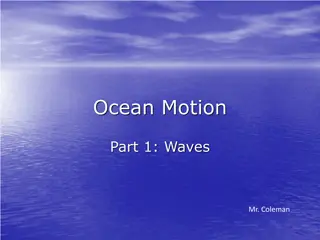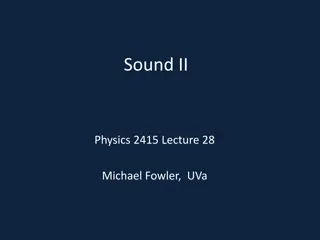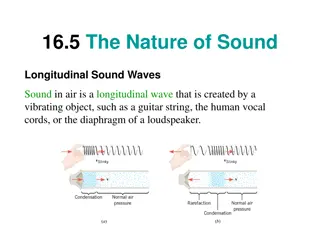The Fascinating World of de Broglie Matter Waves
De Broglie introduced matter waves, challenging traditional physics notions. Discover the implications of quantization of angular momentum, magnitudes of de Broglie wavelengths, and wave-like properties of electrons through insightful visuals and explanations. Unveil the dual nature of electrons as both particles and waves, shaping our understanding of quantum mechanics and reality.
Download Presentation

Please find below an Image/Link to download the presentation.
The content on the website is provided AS IS for your information and personal use only. It may not be sold, licensed, or shared on other websites without obtaining consent from the author.If you encounter any issues during the download, it is possible that the publisher has removed the file from their server.
You are allowed to download the files provided on this website for personal or commercial use, subject to the condition that they are used lawfully. All files are the property of their respective owners.
The content on the website is provided AS IS for your information and personal use only. It may not be sold, licensed, or shared on other websites without obtaining consent from the author.
E N D
Presentation Transcript
deBroglie Matter Waves deBroglie and his matter waves, and its consequences for physics and our concept of reality
Why quantization of angular momentum? = 3 , 2 , 1 = ... me vr = n n 2 / h an integer number of wavelengths fits into the circular orbit = 2 n r where h = p is the de Broglie wavelength
Magnitudes of deBroglie wavelengths Value of dB Particle Electrons of kinetic energy 12.2 1.2 0.12 1 eV 100 eV 10000 eV Protons of kinetic energy 1 keV 1 MeV 1 GeV 0.009 28.6 fm 0.73 fm Thermal neutrons (300K) 1.5 Neutrons of kinetic energy 10 MeV 9.0 fm 0.75 He atoms at 300K you, walking to the student union for lunch at 2 miles per hour 34 . 2 54 10 m 1 = 10 10?????? 1 ?? = 10 15?????? = 10 5
Scanni ng El ectr on M i cr oscope Human hair Table Salt Red Blood Cells
the r ealization that matter has wavelike pr oper ties
Wave Properties of Electrons Transmission Electron Microscope Electrons passed through two slits and detected http://www.hitachi.com/rd/portal/highlight/quantum/doubleslit/index.html
What does it mean? A large number of electrons going through a double slit will produce an interference pattern, like a wave. However, each electron makes a single impact on a phosphorescent screen-like a particle. Electrons have indivisible (as far as we know) mass and electric charge, so if you suddenly closed one of the slits, you couldn t chop the electron in half- because it clearly is a particle. A large number of electrons fired at two simultaneously open slits, however, will eventually, once you have enough statistics, form an intereference pattern. Their cumulative impact is wavelike. This leads us to believe that the behavior of electrons is governed by probabilistic laws. --The wavefunction describes the probability that an electron will be found in a particular location. (see animation https://www.youtube.com/watch?v=Xmq_FJd1oUQ)
We are about to embark on a wave theory of matter It is a good idea to review some concepts about waves
Anatomy of a classical travelling wave For example: Wave on a string Snapshot at some time t
Anatomy of a classical travelling wave ? ?,? = ?0 Fixed time (snapshot) ? ? ? = ?0,? Fixed location ? 2? ? ? ?,? = ?sin ? ?? ? 2? Wavenumber: All harmonic waves satisfy: ?? = ? so 2?? = ? =2?? ? = ?/? ? = ?? ? Hence ? ?,? = ???? ?? ??
Interference waves can interfere (add or cancel) Two solutions to a linear wave equation: ?1?,? , ?2?,? Any linear combination is also a solution to the wave equation: ???????,? = ??1?,? + ??2?,?
Interefering waves, generally ( ) ( ) = + = + cos cos y y y A k x t A k x t 1 2 1 1 2 2 1 1 ( ) ) ( ) ( ) t = + + 2 cos ( cos y A k k x t k k x 2 1 2 1 1 2 1 2 2 2 Beats occur when you add two waves of slightly different frequency. They will interfere constructively in some areas and destructively in others. k 2 cos A x t Can be interpreted as a sinusoidal envelope: 2 2 1 1 ( ) ( ) + + cos k k x t Modulating a high frequency wave within the envelope: 1 2 1 2 2 2
